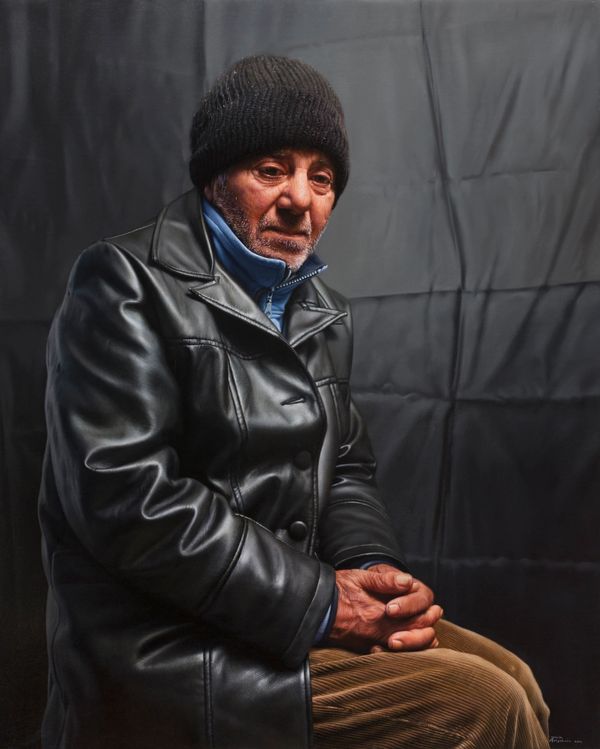VIEWING ROOM "GUILLERMO"
By Javier Arizabalo
His fear reflected a vulnerability and innocence that contrasted sharply with the immense suffering he had endured.
J. A.
ABOUT
Nedelcu Sessions
I approached Nedelcu on the street.
He was from Romania, and his pain was palpable—a story etched into his face and his limp, which, as he told me, had been caused by a youth mafia.
At first, he hesitated and cried, fearing I would harm him.
His fear reflected a vulnerability and innocence that contrasted sharply with the immense suffering he had endured.
However, he trusted me and agreed to pose, giving me the opportunity to capture not only his physical appearance but also the raw reality of his story.
Beyond the photo session, Nedelcu became a life teacher for me. He taught me about the harshness of the world and the resilience of the human spirit.
His trust in me, despite his trauma, was an act of true courage.
The experience became even more painful when his captors tried to extort money from me.
Although I don't know what became of him, his story left me with a deep sense of sadness and anger, and the memory of his humanity and his struggle stays with me every time I see one of his portraits.
–Javier Arizabalo
Men Series
The representation of elderly people has been quite limited since antiquity, often confined to figures of authority and power, and in sculpture, to saints and gods, typically male. It is due to the Judeo-Christian tradition that they tend to be depicted as venerable prophets, patriarchs, and saints.
With a greater emphasis on individualism among the upper classes of society starting from the Renaissance, we can see more examples of the portrait genre. Kings, nobility, patrons, and the church occupy religious and socially prominent spaces, with most of these individuals being of a certain age, displaying traits of serenity, wisdom, and power.
The Baroque period, with its dramatic effect and stark contrasts in lighting, brings more humble characters to the forefront, where serenity and balance are no longer important, but quite the opposite. Opposed to the portraits of saints, nobles, and religious figures, we find beggars, drunkards, and elderly figures in genre painting.
As with other stages of life, at first glance, we tend to attribute certain concepts to the depiction of these figures: vulnerability, loneliness, wisdom, dignity, the passage of time, and decay. These representations reflect attitudes towards aging, revealing both the prejudices and the idealizations of different eras. Even in our time, where the photographic vision prevails, we cannot escape these conventions, showing us that our view is always mediated and never entirely objective.
–Javier Arizabalo

Nedelcu, Sept. 2011, Oil on Canvas, 81 x 65 cm, “Nedelcu” Sessions, “Men” Series © Javier Arizabalo

Nedelcu, Apr. 2011, Oil on Canvas, 46 x 33 cm, “Nedelcu” Sessions, “Men” Series © Javier Arizabalo
Collect with us
© Copyright 2020–2025 HECTOR DIAZ. All rights reserved.
Cookie Policy
This website uses cookies. By continuing to use this site, you accept our use of cookies.
